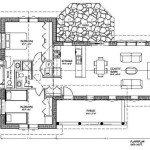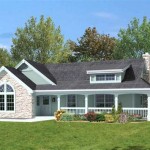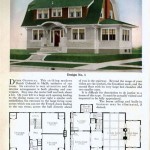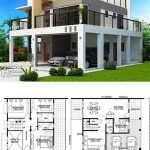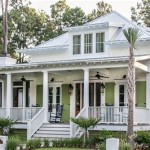A dog house plan is a blueprint or set of instructions used to construct a shelter for a dog. These plans provide detailed specifications, including materials required, measurements, and step-by-step instructions, to ensure the creation of a safe and comfortable home for a furry companion. Whether building a doghouse from scratch or renovating an existing one, a well-crafted plan is essential for a successful and satisfactory outcome.
Dog house plans come in various forms, catering to different needs and preferences. They may range from simple, single-room structures to more elaborate designs featuring multiple rooms, insulation, or even air conditioning. Regardless of the complexity, a comprehensive plan serves as a roadmap, guiding the builder through every phase of the construction process, from selecting the appropriate materials to assembling the structure and ensuring its stability and functionality.
In the following sections, we will delve into the intricacies of dog house plans, exploring different types, materials, and design considerations. We will also provide practical tips and guidance to help you choose and execute the perfect plan for your beloved canine friend.
When planning a dog house, consider these crucial points:
- Size and space
- Materials and durability
- Ventilation and insulation
- Roof design and drainage
- Entryway and accessibility
- Safety and stability
- Customization and aesthetics
- Cost and maintenance
- Local regulations and permits
Addressing these aspects will ensure a comfortable, safe, and long-lasting home for your canine companion.
Size and space
Determining the appropriate size and space for a dog house is paramount to ensure the comfort and well-being of its furry occupant. Several key factors come into play when making this decision:
Dog’s breed and size: The size of the dog house should correspond to the breed and size of the dog. A large dog will require a larger house, while a small dog can be accommodated in a smaller space. Consider the dog’s height, length, and weight when choosing the dimensions of the house.
Number of dogs: If you have multiple dogs, you may need a larger dog house or consider building separate houses for each dog. Ensure there is enough space for all dogs to move around comfortably without feeling cramped.
Climate and weather conditions: The climate and weather conditions in your area should also be taken into account. In colder climates, a larger dog house with insulation may be necessary to keep the dog warm during winter. In warmer climates, a smaller, well-ventilated house may be more suitable.
As a general rule of thumb, the dog house should be large enough for the dog to stand up, turn around, and lie down comfortably. There should be at least 6 inches of headroom above the dog’s head when standing.
Materials and durability
The choice of materials used to construct a dog house plays a significant role in its durability, longevity, and ability to withstand various weather conditions.
- Wood: Wood is a popular choice for dog houses due to its natural insulation properties, ease of workability, and availability. Cedar and redwood are commonly used for their resistance to rot and insects. However, wood requires regular maintenance, such as painting or staining, to protect it from moisture damage and extend its lifespan.
- Plastic: Plastic dog houses are lightweight, durable, and easy to clean. They are also resistant to moisture and insects, making them a low-maintenance option. However, plastic can become brittle in cold temperatures and may not provide sufficient insulation for dogs in extreme climates.
- Metal: Metal dog houses are highly durable and can withstand harsh weather conditions. They are also easy to clean and disinfect. However, metal can be expensive and may become hot in direct sunlight. Proper insulation is necessary to prevent condensation and maintain a comfortable temperature inside the house.
- Composite materials: Composite materials, such as recycled plastic lumber, offer a combination of durability, moisture resistance, and insulation. They are less prone to rot and insect damage compared to wood and are generally easier to maintain.
When selecting materials for a dog house, consider the climate, the dog’s size and activity level, and the desired lifespan of the structure. A well-built dog house using durable materials can provide a safe and comfortable shelter for your canine companion for many years to come.
Ventilation and insulation
Proper ventilation and insulation are crucial for maintaining a comfortable and healthy environment inside a dog house. Ventilation ensures a constant supply of fresh air, preventing the buildup of moisture, odors, and harmful gases. Insulation helps regulate temperature, keeping the dog warm in cold weather and cool in warm weather.
Ventilation
Adequate ventilation can be achieved through vents or windows. Vents should be placed near the top of the dog house to allow warm air to escape, while windows can provide cross-ventilation. The size and number of vents or windows will depend on the size of the dog house and the climate. In hot climates, larger vents or windows may be necessary to promote airflow and prevent overheating.
Insulation
Insulation helps to maintain a stable temperature inside the dog house, reducing heat loss in cold weather and heat gain in warm weather. Common insulation materials for dog houses include foam board, fiberglass batting, and straw. Insulation should be placed in the walls, roof, and floor of the dog house to provide all-around protection. The thickness of the insulation will depend on the climate and the desired level of insulation.
Combination of ventilation and insulation
A well-ventilated and insulated dog house will provide a comfortable and healthy environment for your dog, regardless of the weather conditions. By ensuring proper airflow and temperature regulation, you can help your furry friend stay happy and healthy in their outdoor home.
Roof design and drainage
The roof design of a dog house plays a crucial role in protecting the structure from the elements and ensuring proper drainage. Here are some key considerations:
Roof pitch: The pitch of the roof refers to the angle at which it slopes. A steeper pitch allows water to shed more easily, preventing leaks and water accumulation. In areas with heavy rainfall or snowfall, a roof with a pitch of at least 30 degrees is recommended.
Roof overhang: The roof overhang extends beyond the walls of the dog house, providing protection from rain and snow. An overhang of at least 6 inches is recommended to keep water away from the walls and foundation.
Roof material: The choice of roofing material depends on factors such as durability, cost, and climate. Asphalt shingles are a popular option due to their affordability and ease of installation. Metal roofing is more durable and can withstand extreme weather conditions, but it is also more expensive. Wood shakes or tiles can provide a rustic look but require more maintenance.
Drainage system: A proper drainage system is essential to prevent water from accumulating around the dog house. Gutters and downspouts can be installed to channel water away from the structure. Alternatively, a sloped foundation can be created to allow water to drain naturally.
By carefully considering the roof design and drainage system, you can ensure that your dog house remains dry and protected from the elements, providing a comfortable and safe shelter for your furry companion.
Entryway and accessibility
The entryway of a dog house is a crucial aspect of the design, as it provides the dog with access to the shelter and should be designed to ensure comfort and safety.
Size and shape: The entryway should be large enough for the dog to enter and exit comfortably. The width and height of the opening should be appropriate for the size of the dog. A general rule of thumb is to make the entryway at least 6 inches wider and taller than the dog’s shoulders.
Location: The entryway should be positioned to protect the dog from the elements. In cold climates, the entryway should be placed on the side of the dog house that is sheltered from the wind. In hot climates, the entryway should be placed in a shaded area to prevent the dog from overheating.
Threshold: The threshold of the entryway should be low enough for the dog to easily step over. A raised threshold can make it difficult for older dogs or dogs with mobility issues to enter the dog house.
Accessibility: The dog house should be placed in a location that is easily accessible to the dog. The path to the dog house should be clear of obstacles and hazards, and the ground should be level and stable.
By carefully considering the entryway and accessibility of the dog house, you can ensure that your furry friend can comfortably and safely enter and exit their outdoor shelter.
Safety and stability
Ensuring the safety and stability of a dog house is paramount to providing a secure and reliable shelter for your furry companion. Several key considerations must be addressed during the planning phase to guarantee the structural integrity and well-being of your dog:
- Foundation: The foundation of a dog house serves as its base and provides stability. It should be constructed using durable materials such as concrete, gravel, or treated lumber. A solid foundation prevents the dog house from sinking, shifting, or toppling over, especially during inclement weather or strong winds.
- Structural support: The walls, roof, and floor of the dog house should be constructed using sturdy materials and joined together securely. The framing should be strong enough to withstand the weight of the dog and any external forces, such as wind or snow loads. Adequate bracing and reinforcements should be incorporated to prevent the structure from collapsing or deforming.
- Anchoring: In areas prone to high winds or seismic activity, it is essential to anchor the dog house to the ground or a permanent structure. This can be achieved using stakes, bolts, or straps to secure the dog house and prevent it from being blown away or overturned.
- Non-toxic materials: All materials used in the construction of the dog house should be non-toxic and safe for dogs. Avoid using treated lumber or paints that contain harmful chemicals, as these can be ingested by the dog or cause skin irritation.
By carefully considering these safety and stability factors during the planning stage, you can construct a dog house that provides a secure and comfortable haven for your beloved canine companion.
Customization and aesthetics
Customizing a dog house to match your personal style and the unique needs of your furry friend can add an extra touch of comfort and charm to your outdoor space.
Exterior design: Unleash your creativity by choosing a design that complements your home’s architectural style or your personal preferences. From traditional gable roofs to whimsical shapes, the exterior design can make a statement in your backyard. Consider adding decorative elements such as trim, paint, or embellishments to enhance the visual appeal.
Interior comfort: Create a cozy and comfortable interior by incorporating features that cater to your dog’s well-being. Add a raised platform or bed to provide a comfortable resting spot off the cold ground. Install shelves or storage compartments to keep food, toys, or other dog essentials organized and within reach.
Personal touches: Make the dog house uniquely yours by adding personal touches that reflect your dog’s personality or your special bond. Paint the house in your dog’s favorite color, add their name or paw prints, or decorate it with their favorite toys or treats. These small details will create a truly personalized haven for your furry companion.
By carefully considering the customization and aesthetics of your dog house plan, you can create a one-of-a-kind shelter that is both functional and visually appealing, providing your beloved dog with a comfortable and stylish outdoor home.
Cost and maintenance
The cost of building a dog house can vary depending on several factors, including the size, materials used, and complexity of the design. Simpler dog houses made from inexpensive materials like wood or plastic can cost around $50 to $100, while more elaborate dog houses with insulation, multiple rooms, or special features can cost several hundred dollars or more. It’s important to set a budget before starting construction to ensure you have the necessary resources.
- Materials: The cost of materials will vary depending on the type and quality chosen. Wood, plastic, and metal are common materials used for dog houses, with each material offering advantages and disadvantages in terms of durability, insulation, and cost.
- Size: Larger dog houses will require more materials and labor to build, resulting in higher costs. Consider the size of your dog and the space available in your yard when determining the appropriate size for the dog house.
- Complexity: Dog houses with complex designs, such as multiple rooms, elevated platforms, or built-in storage, will require more time and effort to construct, leading to increased labor costs.
- Maintenance: Regular maintenance is essential to ensure the longevity and functionality of your dog house. This may include tasks such as cleaning, repainting, or replacing worn-out parts. The frequency and cost of maintenance will depend on the materials used and the climate in which the dog house is located.
By carefully considering the cost and maintenance factors involved, you can make informed decisions during the planning and construction process, ensuring that you build a dog house that meets your budget and provides a comfortable and durable shelter for your furry companion.
Local regulations and permits
Before embarking on the construction of your dog house, it is essential to familiarize yourself with any local regulations or permit requirements that may apply in your area. These regulations are typically established by municipal authorities to ensure that dog houses comply with certain safety and aesthetic standards.
Zoning regulations: Zoning regulations may restrict the placement and size of dog houses within residential areas. These regulations aim to maintain the character and harmony of neighborhoods by ensuring that dog houses do not create visual obstructions or pose safety hazards. It is advisable to check with your local zoning board to determine if there are any specific restrictions or setbacks that apply to dog houses in your area.
Building codes: Building codes may establish minimum standards for the construction of dog houses, including requirements for materials, structural stability, and ventilation. These codes are primarily concerned with ensuring the safety and durability of the structure, particularly in areas prone to extreme weather conditions or seismic activity. Failure to adhere to building codes may result in the issuance of fines or even the removal of the dog house.
Permit requirements: In some jurisdictions, obtaining a building permit may be necessary for the construction of a dog house, especially if it exceeds a certain size or complexity. The permit process involves submitting plans and specifications to the local building department for review and approval. This ensures that the dog house meets all applicable regulations and codes before construction commences.
By familiarizing yourself with local regulations and permits, you can avoid potential legal issues and ensure that your dog house is constructed in compliance with the law. It is always advisable to contact your local municipal authorities to obtain accurate and up-to-date information regarding these requirements.










Related Posts


